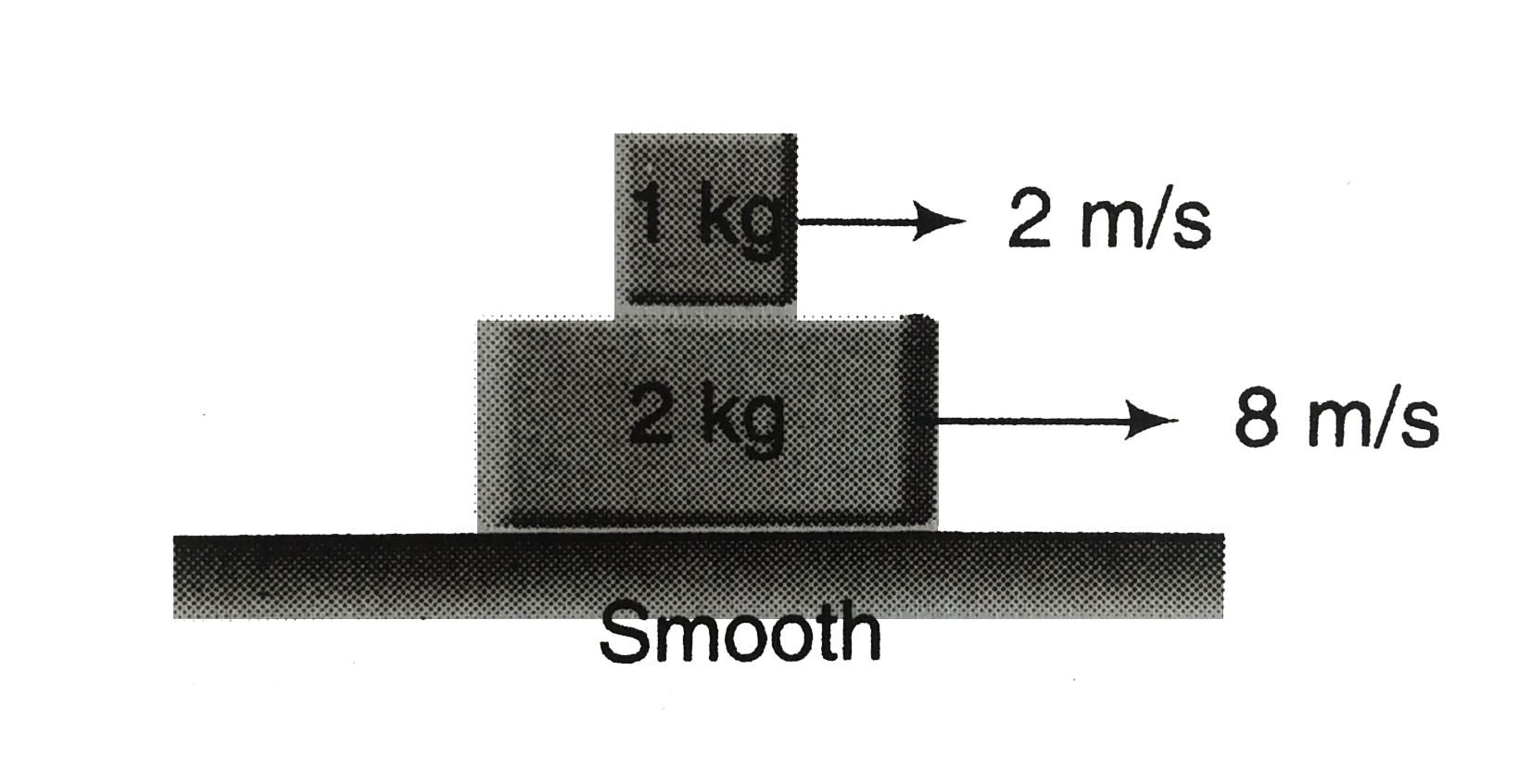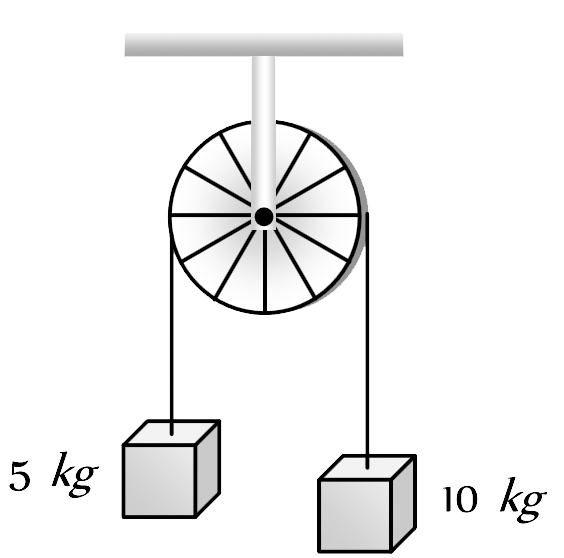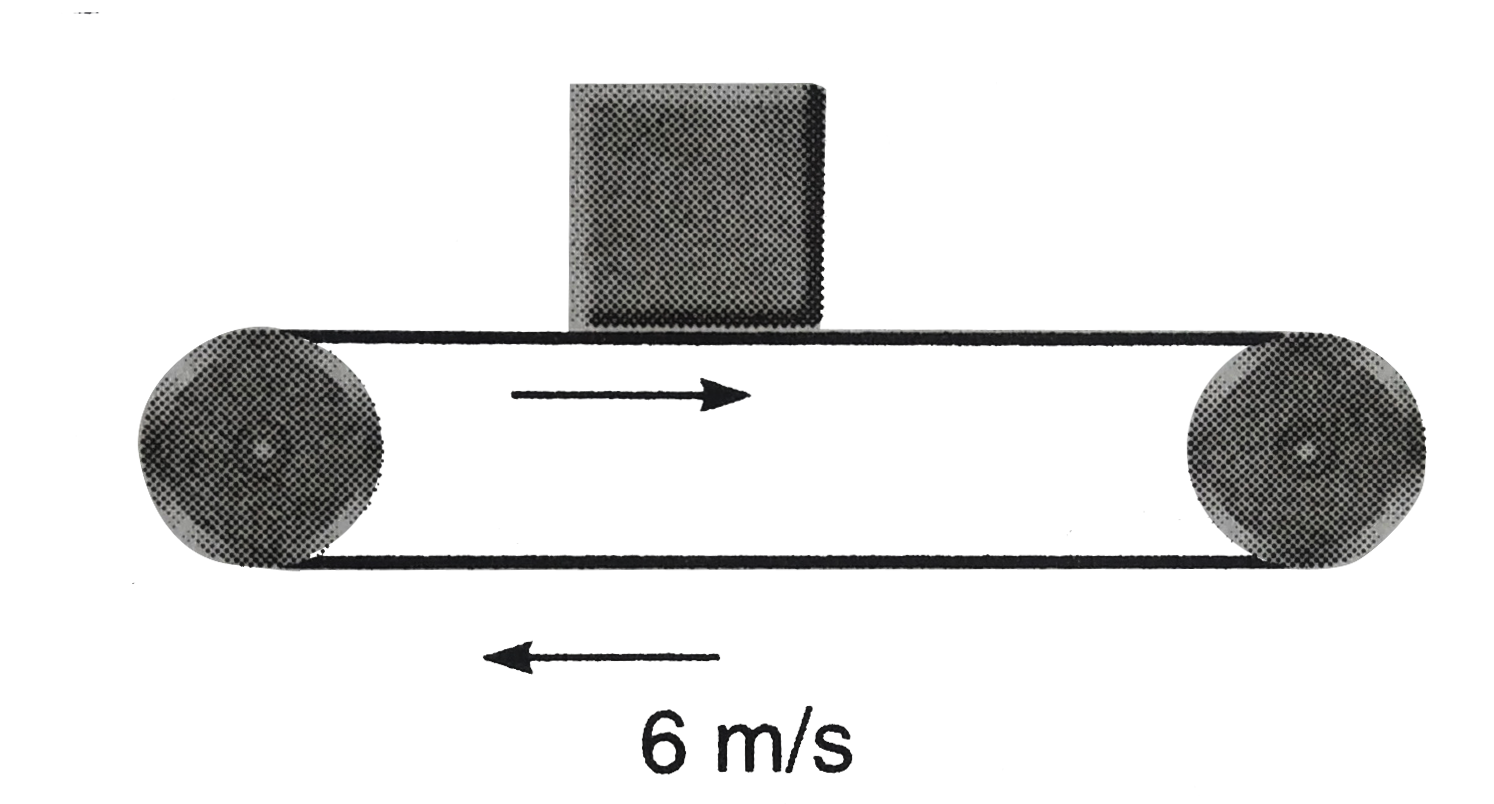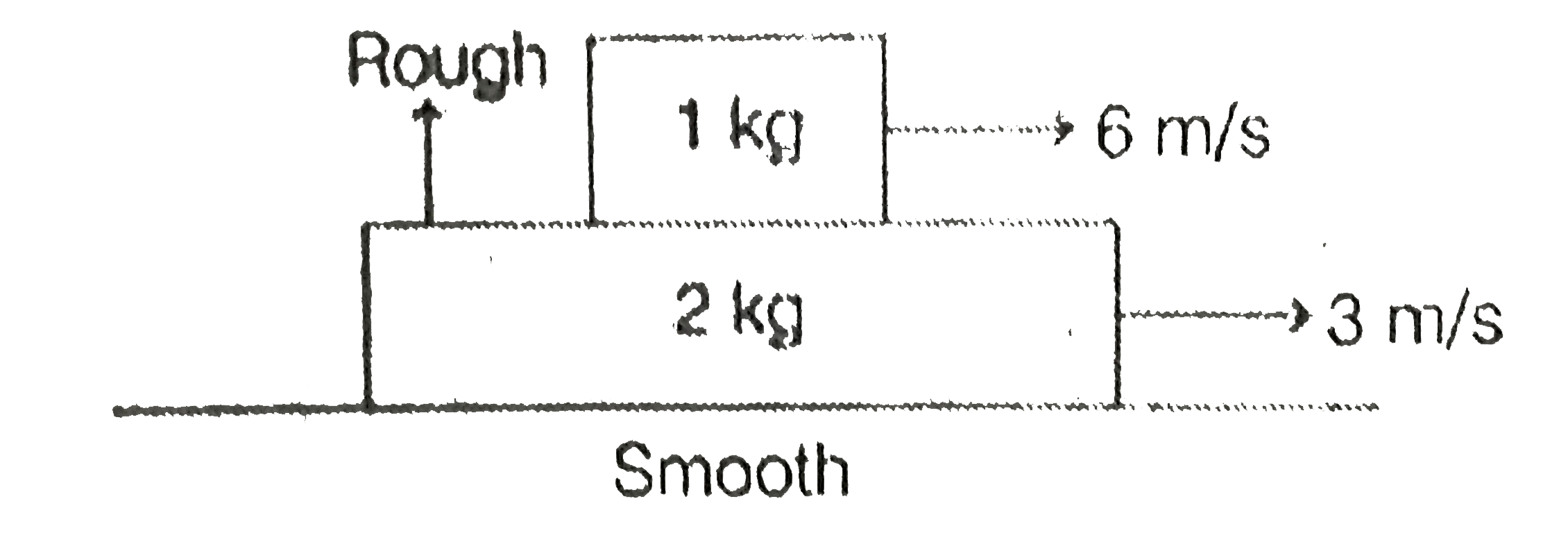Coefficient of friction between two block shown in figure is μ=0.4. The blocks are given velocities of 2m/s and 8m/s in the directions figure. Find

(a) The time when relative motion between them will stop
(b) the common velocities of blocks upto that instant. (c) Displacement of 1kg and 2kg block upto that instant (g=10m/s2).Solution in Gujrati
(i) Frictional force between two blocks will oppose the relative motion. For 1 kg block friction support themotion & for 2 kg friction oppose the motion. Let common velocity be v then
for 1kgv=2+a1t where a1=μ(1g)2=0.4×102=2ms−2⇒2+4t=8−2t⇒6t=5⇒t=1s
(ii) v=2+4t=2+4×1=6ms−1
(iii) Displacement of 1kg block from initial point s=ut+12at2⇒s1=2×1+12×4×12=2+2=4m
Displacement of 2kg block from intial point s=ut+12at2⇒s2=8×1−12×2×12=8−1=7m
Topper's Solved these Questions
- NEWTONS LAWS OF MOTIONBOOK - ALLEN CHAPTER - NEWTONS LAWS OF MOTIONEXERCISE - EXERCISE-I
52 Videos
- NEWTONS LAWS OF MOTIONBOOK - ALLEN CHAPTER - NEWTONS LAWS OF MOTIONEXERCISE - EXERCISE-II
112 Videos
- NEWTONS LAWS OF MOTIONBOOK - ALLEN CHAPTER - NEWTONS LAWS OF MOTIONEXERCISE - EXERCISE-III
28 Videos
- NEWTON'S LAWS OF MOTION & FRICTIONBOOK - ALLEN CHAPTER - NEWTON'S LAWS OF MOTION & FRICTIONEXERCISE - EXERCISE (JA)
4 Videos
- RACEBOOK - ALLEN CHAPTER - RACEEXERCISE - Basic Maths (Wave Motion & Dopplers Effect) (Stationary waves & doppler effect, beats)
25 Videos
Similar Questions
USS 150) Two masses of 5 kg and 10 kg are connected to a pulley as shown. What will be the acceleration of the system (g= acceleration due to gravity)

View SolutionA particle is in straight line motion with uniform velocity A force is not required
View SolutionAssertion: The driver in a vechicle moving with a constant speed on a straight road is in a non-inertial frame of referance.
Reason: A reference frame in which Newton's laws of motion are applicable is non-inertial.
View SolutionA piece of wire is bent in the shape of a parabola y=kx2 (y-axis vertical) with a bead of mass m on it. The bead can slide on the wire without friction. It stays at the lowest point of the parabola when the wire is at rest. The wire is now accelerated parallel to the x-axis with a constant acceleration a. The distance of the new equilibrium position of the bead, where the bead can stay at rest with respect to the wire, from the y-axis is:
View SolutionThe frequency of a radar is 780 MHz. After getting reflected from an approaching aeroplane, the apparent frequency is more than the actual frequency by 2.6 kHz. The aeroplane has a speed of
View Solutioncoefficient of friction between two blocks shown in figure is mu =0.6 . The blocks are given velocities in the direction shown in figure. Find (a) the time when relative motion between them is slopped. (b) the common velocity of the two blocks. (c) the displocement of 1kg and 2kg blocks upto that instant. (Take g =10m//s^(2))
View SolutionA conveyor belt is moving with constant speed of 6m/s. A small block is just dropped on it.Coefficient of friction between the two is μ=0.3. Find

(a) The time when relative motion between them will stop
(b) Displacement of block upto that instant (g=10m/s2).
View SolutionCoefficient of friction between two block shown in figure ia μ=0.4. The blocks are given velocities of 2m/s and 8m/s in the directions figure. Find

(a) The time when relative motion between them will stop
(b) the common velocities of blocks upto that instant. (c) Displacement of 1kgand 2kg block upto that instant (g=10m/s2).
View SolutionIn the figure shown upper block is given a velocity of 6 m//s and lower block 3 m//s . When relative motion between them is stopped. .
View SolutionIn the figure shown, upper block is given a velocity of 6 m//s and lower block. 3 m//s . When relative motion between them is stopped
View SolutionIn the figure shown, upper block is given a velocity of 6m/s and lower block. 3m/s. When relative motion between them is stopped

View SolutionCoefficient of friction between two blocks shown in Fig. 7.203 is μ=0.4 . The blocks are given velocities of 2 m/s and 8 m/s in the directions shown in figure . The time when relative motion between them will stop is ( in sec) . :

View SolutionA force of 200N is applied as shown in the figure on block of 3 kg. The coefficient of friction between the block and the wall is 0.3. Find the friction acting on the block. (in N) {Take g = 10 m/s2

View SolutionThe coefficient of friction between the two blocks shown in the figure is mu = 0.4 and between the lower block and the ground is zero. The blocks are given velocities of 2 ms^(-1) and 8 ms^(-1) respectively in the direction shown in the figure. In how much time (in seconds) the slipping between the blocks will stops ?
View Solutioncoefficient of friction between two blocks shown in figure is mu =0.6 . The blocks are given velocities in the direction shown in figure. Find (a) the time when relative motion between them is stopped. (b) the common velocity of the two blocks. (c) the displacement of 1kg and 2kg blocks upto that instant. (Take g =10m//s^(2))
View SolutionA conveyor belt is moving with constant speed of 6 m//s . A small block is just dropped on it.Coefficient of friction between the two is mu = 0.3 . Find (a) The time when relative motion between them will stop (b) Displacement of block upto that instant (g = 10 m//s^(2)) .
View Solution
